Fish Hatchery
Fish hatcheries are facilities where fish are bred, hatched, and reared under controlled conditions for various purposes, such as restocking natural populations, supporting aquaculture, and conservation. Hatcheries provide optimal conditions for breeding, allowing for the production of high-quality, disease-free juveniles. Species commonly cultivated include salmon, trout, and tilapia. Hatcheries play a critical role in bolstering fish populations, especially for endangered species or those overfished in the wild. However, careful management is necessary to prevent genetic issues and ecological imbalances when these fish are introduced into natural habitats. Fish hatcheries support aquaculture development and contribute to food security and biodiversity conservation.

Perry Raso
Matunuck Oyster Farm, United States
Joni Lee Giovanna Hesley
Education Emerita, CropKing Inc., United States
Virendra Kumar Goswami
Indian Institute of Technology, India
Amit Das
Memorial University of Newfoundland, Canada
Mandeep Kaur
Panjab University, India
Pavarot Noranarttragoon
Department of Fisheries, Thailand



Title : Application of Artificial Intelligence and NISAR satellite to study the air sea CO2 exchange and aquatic toxicology to develop ‘Aquatic Pollution Remediation Technologies’(PART)
Virendra Kumar Goswami, Indian Institute of Technology, India
Title : Conditionally pathogenic microparasites (Microsporidia and Myxosporea) of mullet fish potential objects of mariculture in the Black and Azov Seas
Violetta M Yurakhno, A. O. Kovalevsky Institute of Biology of the Southern Seas of Russian Academy of Sciences, Russian Federation
Title : Integrating art, science and rural development: The multifaced role of aquarium keeping
T V Anna Mercy, Kerala University of Fisheries and Ocean Studies, India
Title : Seaweed aquaculture policy gap analyses in Indonesia, Kenya, and Tanzania
Megan Considine, The Nature Conservancy, Puerto Rico
Title : Utilizing art to enhance learning STEM subjects required for aquaculture
Joni Lee Giovanna Hesley, Education Emerita, CropKing Inc., United States
Title : Exploring the aquaculture potential of marine sponges (Phylum Porifera) in Kerala, India: A focus on growth dynamics and optimization of farming protocols
Anita M George, University of Kerala, India